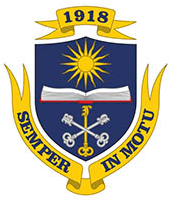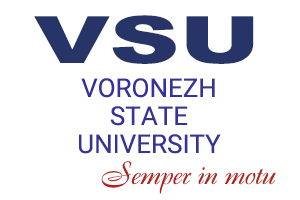For many years, Voronezh State University has been working in cooperation with such a well-known research centre as the Joint Institute for Nuclear Research, Dubna (the Moscow region). Under the agreement between the two institutions, the Joint Institute for Nuclear Research and Voronezh State University have been carrying out joint research and personnel training in the training centre of the Joint Institute for Nuclear Research that was created with participation of Moscow State University and the National Research Nuclear University MEPhI, and have been offering internship placement opportunities for VSU postgraduate and undergraduate students. Associate Professor of the Department of Nuclear Physics Viktor Vakhtel told us about research cooperation between physicists of VSU and employees of the Joint Institute for Nuclear Research:
‘Since 1960’s the Department of Nuclear Physics of the Faculty of Physics has been working in cooperation with the Jelepov’s Laboratory of Nuclear Problems – one of the Institute’s laboratories. Under one of the agreements our scientists have been carrying out research in the field of so called Non-Accelerator Physics aimed at the solution of problems in the area of Materials Science. Our colleagues have set a trial goal to carry out joint research in the area of Materials Science. The Centre for Collective Use of Scientific Equipment and our Department have the analytical equipment, that the Joint Institute for Nuclear Research does not have, for example, Mössbauer spectrometer, and also a team of specialists. The goal of our joint research is to acquire new data about the mechanism of synthesis of special kinds of steels. This is a new area of cooperation between our institutions that is being implemented at the confluence of Fundamental and Nuclear Physics and it has attracted a lot of interest from our colleagues in the Laboratory of Nuclear Problems. A new project can be based on this research and in case of success, further work is expected to be carried out for industrial benefits,’ said Viktor Vakhtel.
The main idea of the research is steel modifications leading to expected and unexpected changes. Unexpected changes will reveal things to be avoided when handling the materials whereas successful modification will make it possible to develop technology of synthesis of new materials with certain required properties such as environmental protection, corrosion and others. Such projects are not new for VSU scientists – they have done similar research, for example, for the Novovoronezh nuclear power station. However, this technique that has been used in our university for about 5-6 years is unique to universities of the Voronezh region.
Senior Research Assistant at the Laboratory of Nuclear Problems of the Joint Institute for Nuclear Research Atanas Velichkov talked about the importance of and prospects for the research:
‘Our joint work is an experiment rather than a project. The Institute of Metal Science of Bulgarian Academy of Sciences synthesises steel samples that are being studied by me and my colleagues in Dubna using different techniques, for example, positron electronic spectroscopy, and by the method of perturbative correlations. Using the equipment of the Centre for Collective Use of Scientific Equipment of Voronezh State University and the Mössbauer spectrometer we want to go further with our research. As Dubna Institute has international status it has a lot of projects carried out by different countries, including Bulgaria, the country of my citizenship. We had a goal that has great scientific and industrial importance. Steel, as we know, is exposed to changes caused by various reactions, especially in junctions, for example in welding areas. The industry has methods to estimate negative effects. However, they are quite costly. We expect nuclear physical techniques to be less costly and more effective. Such projects also have a lot of significance for science as they can trigger both development of the method and further joint research”.








